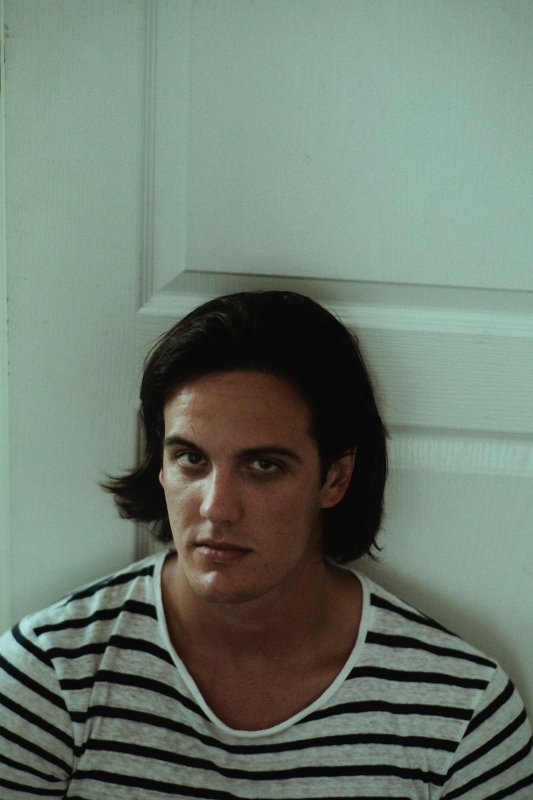Krisztián Gábor Török

In 2021, 50 contemporary art curators, researchers, and museum professionals from 32 different countries were awarded support to attend the CIMAM 2021 Annual Conference, in-person and online.
For the first time, and thanks to the generous support of The Getty Foundation who sponsored the virtual platform, 27 grantees attended the conference online, while 23 attended onsite.
Launched in 2005, CIMAM’s Travel Grant Program is designed to foster cooperation and cultural exchange between contemporary art curators and museum directors in emerging and developing economies and their counterparts in other regions of the world.
Krisztián Gábor Török's Conference Report
I would like to extend my gratitude to the Getty Foundation, CIMAM Travel Grant Committee, and the CIMAM Team for their trust and support, giving me the possibility of joining in person the CIMAM Annual Conference in Lodz and Gdansk (5-7 November 2021). As well, I would like to thank our hosts both in Gdansk and Lodz for organizing the event and taking care of us amidst the challenging circumstance that the Polish cultural scene is facing today.
For me, this year’s CIMAM conference was an important moment of solidarity between cultural workers around the globe, by being the first hybrid conference after the first three waves of the ongoing COVID-19 crisis. The context of Poland brought an even greater urgency because of the country’s deeply polarized public life in the past years, something I can relate to coming from Hungary, where the situation is quite similar. It was a great opportunity for me to gather with other cultural workers, to talk about polarisation and the ongoing climate crises, and how to imagine different modes of operation for the museums of the future. Alongside lectures, the round tables, and workshops, the conversations in the breaks, during meals, and after the event, felt therapeutic to process the past two years’ events. The conference was a great opportunity for me to meet with directors, curators, administrators with far greater experience than mine and it allowed me to enrich my perspective on the role of museums and the challenges they face.
Although I am familiar with the Polish art scene because of its geographical closeness to Hungary, and its shared history and present conditions, it was my first time to visit Lodz and Gdansk. The conference's approach thrilled me to focus on cities outside of Warsaw, the capital of Poland. I am coming from a centralized country like Hungary; I find it necessary to seek alliances in major cities outside of capitals to better understand peripheral regions. The conference's program was well balanced between Eastern Europe and International contributors that allowed to contextualize the local conversation in wilder narratives of global urgencies. Maristella Svampa's keynote lecture was a great example of this. Her main point was to connect small-scale local grassroots social movements to a wilder network of international resistance networks. According to Svampa, COVID-19 escalated the necessity of doing this, as many topics that only concerned activists and specialists became part of public debates. As a curator who is actively thinking of the social potential of culture and involved with thinking through grass-roots approaches, her views great entering point for me to think about the conference at large.
Binna Choi's talk on the need for the long-term sustainability of socially engaged art practices was important for my current curatorial work and research. The presentation proposed a future collaborative platform between institutions called COMMONS.ART. As a curator and director of Casco Art Institute in Utrecht, Binna Choi has been involved with several socially engaged art projects and collectives in the past decade. In relation to Svampa’s proposition, Choi’s platform proposes an international collaboration between different institutions to rethink the way they fund socially engaged art projects. She proposed a new platform based on the idea of the commons, where institutions interested in such practices can share, develop, rethink, and instigate new or existing alliances. Choi’s view is that this is a necessary step towards rethinking the ecosystem of cultural productions to tackle and engage with our ongoing troubles.
The artist Oleksiy Radynski’s presentation Museum of Extraction continues the focus on the necessity to engage and build alliances locally. Radynski presented various efforts to fight the so called “de-communization” in Ukraine, which is forgetting and dismissing the country’s Soviet past. A ruling elite of the country instigates these actions to distract public opinion from polarising and extractivist policies under the banner of “cultural war”. For me, the most interesting of these projects was the work of the Denede collective, who turned towards the forgotten regional museums in Ukraine which are primary targets of the de-communization process. These museums are not art museums, but a museum of regional or natural history or local war efforts, but they contain many unique monumental frescoes, mosaics, and monuments from the Soviet past. The Denede collective aims to reimagine these museums as community centers and try to negotiate with the local officials as part of this process to save the museums and their history. I can read their work both as a fight against forgetting to challenge the current ruling class and a way of turning the leftovers of the state socialist past in Ukraine into monuments that can inspire future cultural workers.
I can link Radynski’s contribution to Choi’s and Svampa’s lectures and summarise my thoughts and my takeaway from the conference. The existing undervalued or bound to be destroyed cultural infrastructure can bring unlikely alliances to contemporary art institutions that can bring social players outside of the contemporary art circuit into the play. If we want to build a wilder strategy between different museums around the world to fight against polarization and climate crisis, we should start by making institutions more embedded in their local. This can allow them to engage with more diverse audiences and co-producers. If we follow Svampa’s call, after exploring these different axes of relations, we can push for a more international approach.